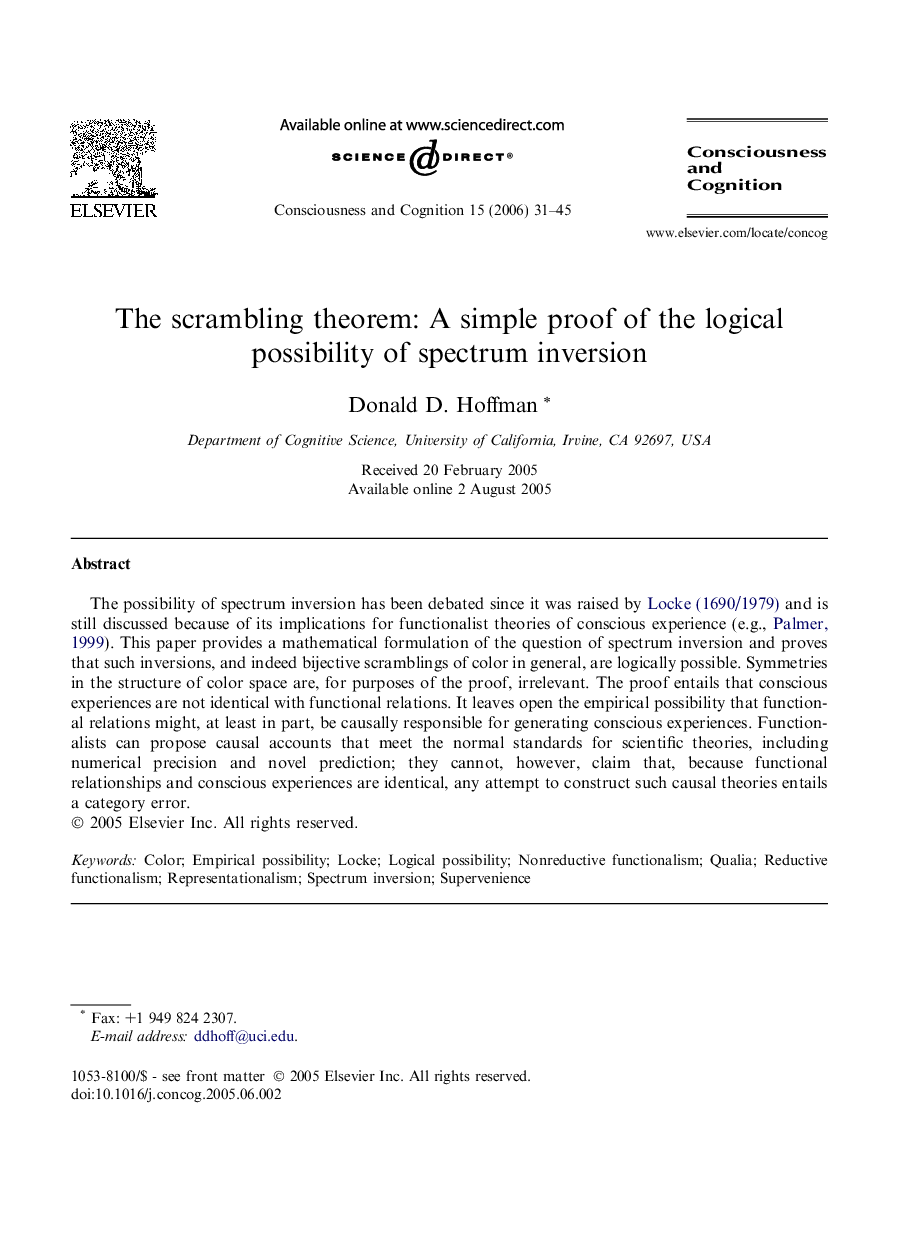| Article ID | Journal | Published Year | Pages | File Type |
|---|---|---|---|---|
| 928162 | Consciousness and Cognition | 2006 | 15 Pages |
The possibility of spectrum inversion has been debated since it was raised by Locke (1690/1979) and is still discussed because of its implications for functionalist theories of conscious experience (e.g., Palmer, 1999). This paper provides a mathematical formulation of the question of spectrum inversion and proves that such inversions, and indeed bijective scramblings of color in general, are logically possible. Symmetries in the structure of color space are, for purposes of the proof, irrelevant. The proof entails that conscious experiences are not identical with functional relations. It leaves open the empirical possibility that functional relations might, at least in part, be causally responsible for generating conscious experiences. Functionalists can propose causal accounts that meet the normal standards for scientific theories, including numerical precision and novel prediction; they cannot, however, claim that, because functional relationships and conscious experiences are identical, any attempt to construct such causal theories entails a category error.
